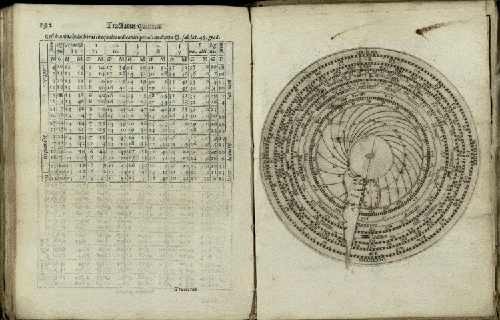Viridarium Mathematicorum, 1563
This tract by Veronese mathematician Giovanni Padovani treats both astronomy and astrology. Of particular interest in this work are the volvelles: paper cut-outs with rotating parts. Books with moving parts have a long history. Volvelles were used to locate the position of the sun or moon in the zodiac, which would determine the best time (or the worst) to be bled to counter an imbalance of the four humors. Good health required a balance between phlegm, blood, yellow or black bile—the four humors. In fact, people were categorized into distinct physiological types such as melancholic or sanguine—words still in use—which refer to an expression of a particular humor or temperament. Humoral theory linked to the four elements of nature (earth, air, fire, and water) and qualities of hot or cold, wet or dry, to create a truly integrated theory of the existence of all matter. Physicians might use texts with volvelles to compute propitious times to heal the sick by re-balancing the humors, through bleeding, for instance. The rotating feature of this volvelle, called an index, represents the sun and can be set to a specific date. Some of these disks show two index arms, one for the sun, one for the moon, and their places within the zodiac and with respect to each other can have astrological meaning and, hence, implications for health advice. This particular volvelle appears to allow the user to reckon measurements not only to the nearest day, but also the nearest hour.

